Search Posts
Recent Posts
- U.S. Carries Out Limited Strike on Iran’s Known Nuclear Sites (Updates) June 22, 2025
- A Greener View: E. Coli vs. Vegetables, and Your Garden – Jeff Rugg June 22, 2025
- Rhode Island Weather for June 22, 2025 – Jack Donnelly June 22, 2025
- Ask Chef Walter: The Art and Science of Baking – Chef Walter Potenza June 22, 2025
- Gimme’ Shelter: Aurora is waiting for a home at the Providence Animal Control Center June 22, 2025
Categories
Subscribe!
Thanks for subscribing! Please check your email for further instructions.
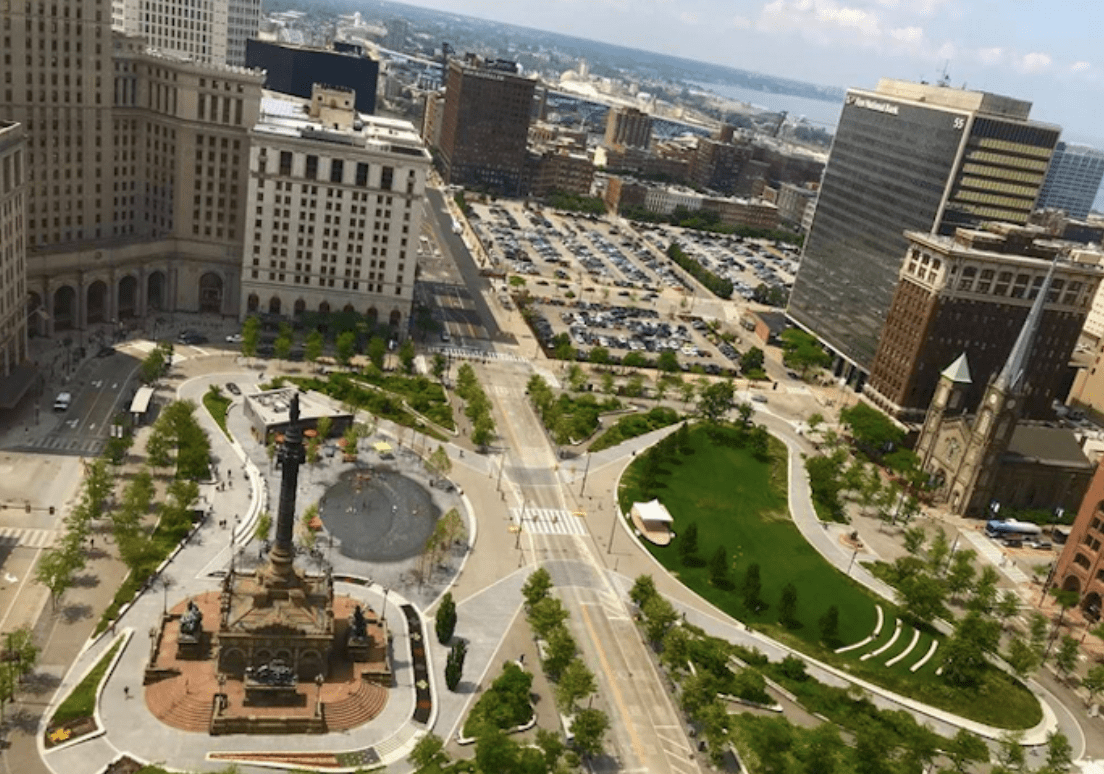
Cleveland, fair and square – David Brussat
by David Brussat, Architecture Here and There, contributing writer
Photo: Public Square, with Civil War memorial and base of Terminal Tower at left. (thisiscleveland.com)
My first visit to Cleveland revealed a city rich in history and in historical architecture, far beyond what I had expected. The downtown and beyond feature many more large, old, lovely buildings than Providence. For me and perhaps for readers of this blog, the best way describe Cleveland is by comparison with Providence. Cleveland proper is more than twice the size of Rhode Island’s capital, 381,009 to 179,883; but Providence has almost twice Cleveland’s density of population, 9,773 residents per square mile to Cleveland’s 4,901.

Terminal Tower.
Cleveland, originally called Cleaveland, was founded on the southern bank of Lake Erie in 1796 by Gen. Moses Cleaveland, who led the survey team that platted the Western Reserve claimed by colonial Connecticut. He laid out the settlement in the New England style, around what he called Public Square. Soon after the founding, Cleaveland traveled back to Connecticut, never to return. The first “a” in the name was dropped in 1831 to fit onto the masthead of the Cleveland Advertiser, a spelling that soon became official. In 1836 “open warfare nearly erupted” (in the words of Wikipedia), with neighboring Ohio City, across the Cugahoga from Cleveland. It was annexed in 1854 and is now the neighborhood of Ohio City.
I’m sure my host and oldest friend, the humorist Stevenson Hugh Mields, will forgive my spare account of Cleveland’s history. He used my visit to further acquaint himself with the city, which he normally avoids, having ditched D.C.’s madding throng two years ago for Cleveland’s western exurbs, near Oberlin and its college. He now lives on a farm. His father was my father’s oldest friend, both from Milwaukee, and they both were city planners in Washington and loved cities. Steve’s oldest friend loves cities too: Steve does not. He avoids Cleveland as best he can – because it is a city. He hates not just Washington but New York, Paris, and just about any other major conurbation. In spite of himself, however, this past week he could not hide his affection for and pride in many aspects of Cleveland.
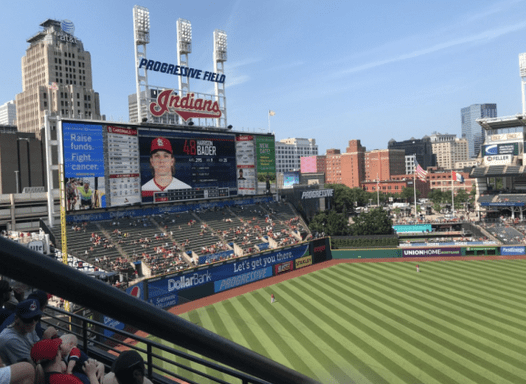
View of downtown from Progressive Field.
After my arrival we watched the Cleveland Indians trounce the St. Louis Cardinals 7 to 2, in one inning slamming three home runs in three straight at-bats while I stood in line for dogs. The stadium sits near the banks of the Cuyahoga amid downtown, offering views of the Forest City’s skyline.
Over the next few days we visited the delightful West Side Market, in the aforementioned neighborhood of Ohio City. A neoclassical-Byzantine shed of brick, it was erected in 1912 with a clock tower and Guastavino-tiled ceiling, its giant hall chock-a-block with food stalls. We explored the Cleveland Arcade, built in 1890 and inspired by Milan’s 1877 Galleria Vittorio Emanuele. This gallery, in the Art Nouveau style, sits between two buildings of nine stories spanned by a glass ceiling midway up covering four floors of shops below – now hotel rooms – with two floors of shops on the ground floor and basement levels. This is reminiscent of the Providence Arcade (1828), the nation’s oldest (but not its first, long gone in New York and Philly) indoor mall, with a ground floor of shops topped, since 2013, by two stories of mini lofts that have now gone condo.
We also explored the Euclid Arcade (1911), a neoclassical shopping gallery just down Euclid Street from its larger, older and more famous sister. Steve and I did not realize that right next door to the Euclid was a similar facility, the Colonial Arcade (1898). I sat down for a drink to await Steve’s perusal of a nearby shop, unaware that the food court where I sat was the connection to the other arcade.
Providence has no equivalent to Cleveland’s extraordinarily beautiful Terminal Tower (1927), 52 stories high. It was the tallest building outside New York City from 1927 until 1964. In the Beaux Arts style, it closely resembles New York’s Woolworth Building (1913), by Cass Gilbert, designer of four buildings on the Oberlin campus, including the splendid Allen Memorial Art Museum, which we saw the next day. Cleveland’s Union Terminal was built under Terminal Tower in 1930. The rail station closed in 1977 after Amtrak switched to a station on the banks of Lake Erie on the site of Cleveland’s original train station, Union Depot, built 1853 and rebuilt in 1865 after a fire. Union Depot had been the largest rail terminus in the U.S. until Grand Central Terminal in NYC was built in 1913. (The original Pennsylvania Station, completed in 1910 and much bigger still, was not a terminal – end of a line – but a station for through rail traffic.) The new Cleveland station sits next to a highway running along Lake Erie. Cleveland Union Terminal was renovated by 1990 into a shopping mall.
Terminal Tower, now known, officially, by some, as the Tower City Center, faces Public Square, which harks back to the city’s founding. It boasts an elegant Civil War memorial similar to Kennedy Plaza’s Civil War memorial in Providence. Cleveland’s Public Square is also bounded by buildings in a variety of styles, old and new. Not far north of Public Square is another landscaped civic plaza, the Cleveland Mall, twice the size of Public Square, and also stricken by outbreaks of the new amidst the old. The Mall is younger than Public Square but older than – and perhaps comparable to – Waterplace Park in Providence, built in the 1990s in a style far more traditional than might be expected for its era.
The Cleveland Mall was conceived in 1903, and inspired by the temporary, neoclassical White City, centerpiece of the World’s Columbian Exposition of 1893, in Chicago, which attracted 27 million visitors over six months. That was well over a third of the U.S. population, before air flight and motor cars. It was so popular that city fathers across the nation sought to copy it in their own cities. One such city was Providence, which centered its effort around Kennedy Plaza (then Exchange Place), but a more sustained example was Cleveland, which hired Daniel Burnham, famed for organizing the White City, to design its Cleveland Mall with an eye to the burgeoning City Beautiful Movement.
So Cleveland stacks up well to Providence, with the blessings (sorry, Steve) of size, in all of its dimensions, but Providence has some key advantages.
Cleveland’s downtown has more surviving beautiful historic buildings, most particularly the Terminal Tower, than has Providence, but Providence has a more historically intact downtown than Cleveland, with more blocks totally unsullied by modern architecture, street after street of historic buildings erected, mostly, between 1870 and 1930. Cleveland has many such buildings but there are fewer streets where the historical feel of their character is not interrupted, often quite dreadfully so, with modernist structures, whose ear to history is deliberately shut off. (Modern architecture is purposely anti-traditional.) And while the streets of downtown Cleveland are generously wide, downtown Providence’s streets are almost uniformly narrow, with a height-to-width ratio that urbanists calculate as being perfect for creating the outdoor-room feeling that is most comfortable for pedestrians. Destinations seem closer and distances shorter. Both Providence and Cleveland are fortunate to have had troubled economies in the heyday of modern architecture. Cleveland lacks the competitive plethora of stark modernist towers common to larger cities. Most of its downtown skyscrapers are relatively pleasing postmodern evocations of the prewar era of early towers in New York City.
The downside of living at a distance from a city is the need to spend more time in an automobile. Steve and I drove around a lot, to many charming small towns outside of Cleveland, but in particular to the small college town of Oberlin. The humorist is also a musician, and Oberlin’s music department is among the best in the world. As the school opens after the pandemic, and the calendar fills up again with free concerts by music faculty and students, the spirit of Steverino will take wing. He will rise with the joy of the blue heron named Harry who arose from the pond in front of his house almost every time we pulled into its dirt track driveway. Steve will not need to borrow the thrill of the city that enchants his old friend from Providence, at least not until I return.
I doff my hat (a new hat with a floppy brim that served me well at Progressive Field last Wednesday) to all who sent emails and comments urging me not to leave this or that classical highlight off of my Cleveland visit.
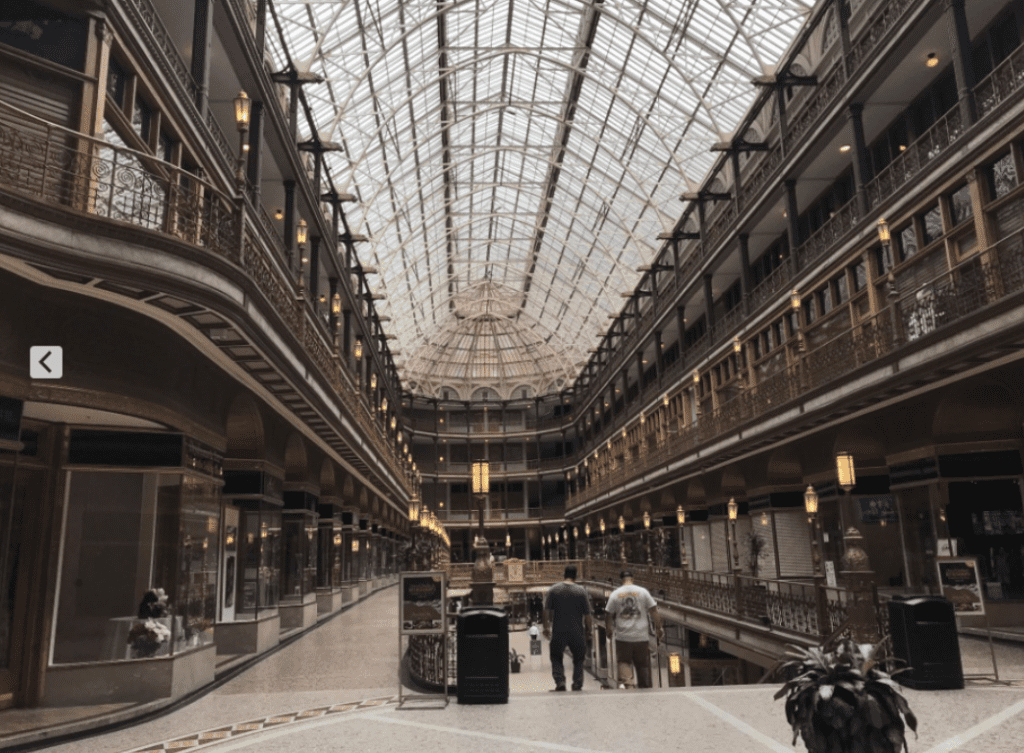
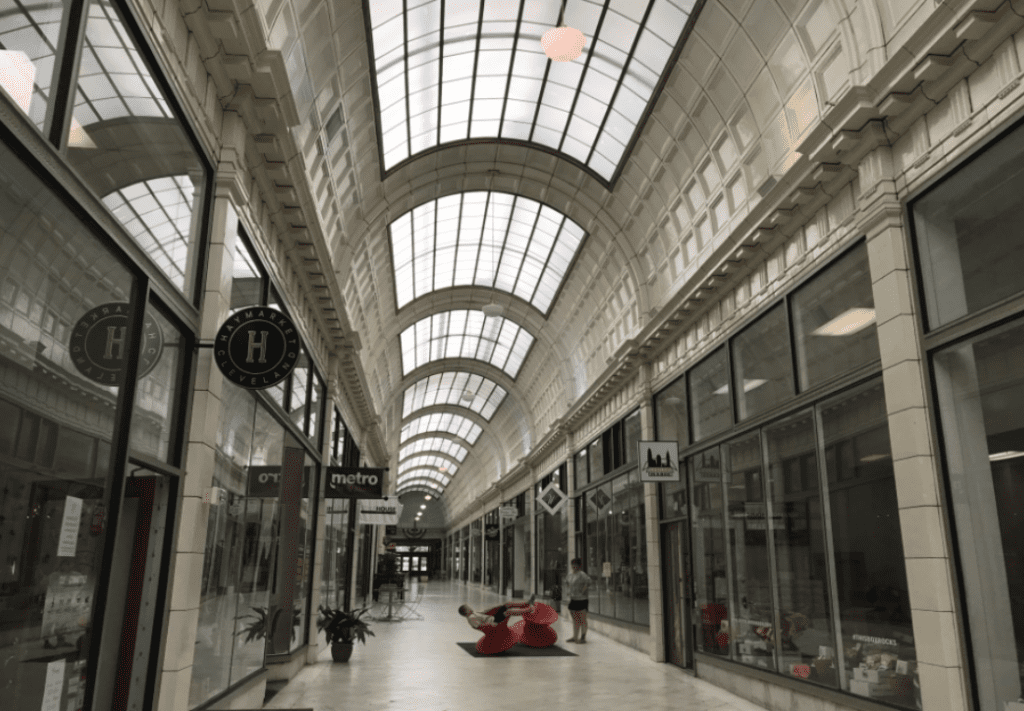
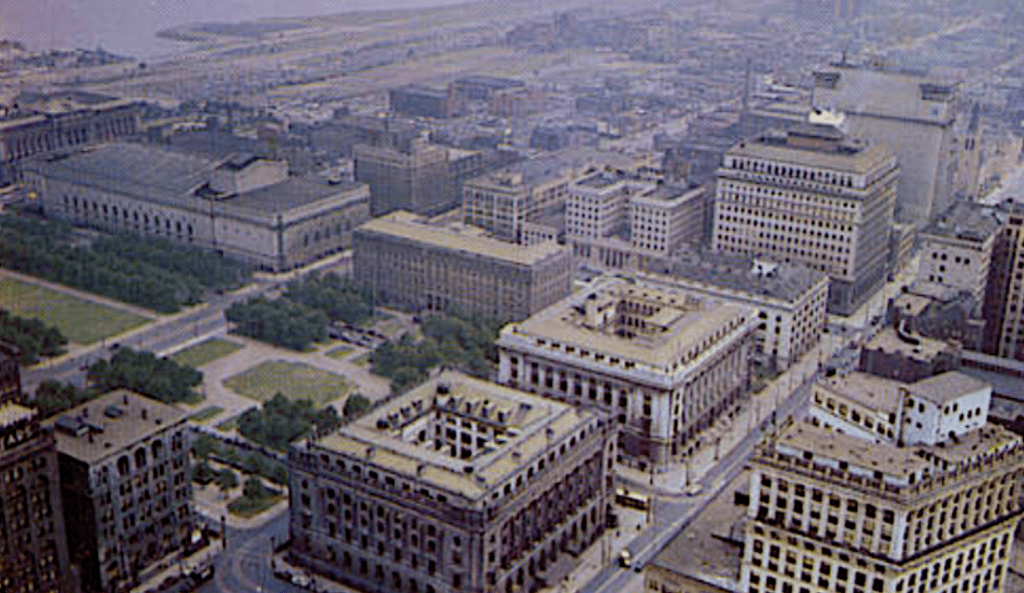
_____

My freelance writing and editing on architecture and others addresses issues of design and culture locally and globally. I am a member of the board of the New England chapter of the Institute of Classical Architecture & Art, which bestowed an Arthur Ross Award on me in 2002. I work from Providence, R.I., where I live with my wife Victoria, my son Billy and our cat Gato. If you would like to employ my writing and editing to improve your work, please email me at my consultancy, dbrussat@gmail.com, or call (401) 351-0457 https://architecturehereandthere.com/
